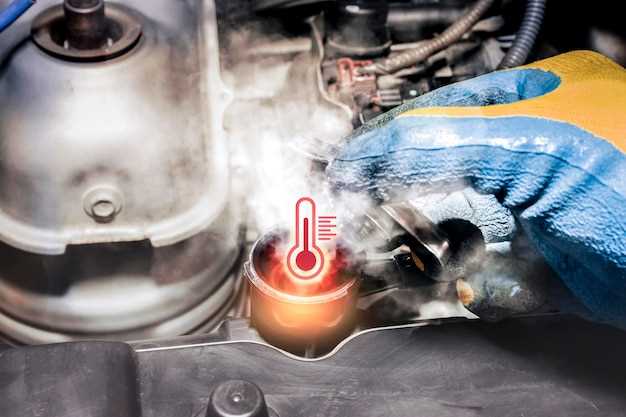Coolant Types Explained – Which One to Use?

Choosing the right coolant for your vehicle or machinery is essential for optimal performance and longevity. With a variety of coolant types available on the market, each designed for specific applications and conditions, it’s crucial to understand their differences and benefits. This article aims to guide you through the various types of coolants, helping you make an informed decision based on your individual needs.
Coolants serve a vital role in regulating temperatures, preventing overheating, and protecting engine components from corrosion and wear. Whether you are dealing with conventional antifreeze, organic acid technology (OAT) coolants, or water-based solutions, understanding their chemical compositions and properties will ensure that you select the most effective option for your system.
In this exploration, we will delve into the characteristics, advantages, and recommended applications of each type of coolant. By the end of this article, you will be equipped with the knowledge needed to choose the right coolant to enhance your engine’s efficiency and extend its lifespan.
Choosing the Right Antifreeze for Seasonal Temperature Variations

Selecting the appropriate antifreeze is essential for ensuring optimal engine performance and longevity, particularly as seasonal temperatures fluctuate. Antifreeze serves multiple functions, including lowering the freezing point of the coolant, raising the boiling point, and providing corrosion protection. Understanding these functions will help you choose the right antifreeze for your specific climate conditions.
In regions experiencing extreme cold, a lower freezing point is crucial. Ethylene glycol-based antifreezes are often preferred in such climates due to their superior freezing protection, which can reach temperatures as low as -60°F. On the other hand, propylene glycol-based antifreezes, while safer for the environment and human contact, offer slightly less freeze protection and are better suited for milder climates.
As seasons transition, it’s important to consider the temperature fluctuations within your area. For instance, if you live in an area with significant temperature swings, a mixture of 50% antifreeze and 50% water is recommended. This optimal ratio not only provides sufficient freeze protection but also helps maintain engine cooling efficiency during hotter months.
Additionally, pay attention to the specific requirements of your vehicle manufacturer. Some vehicles may require specific types of antifreeze or additives for optimal performance. Always check your vehicle’s manual or consult a professional if uncertain.
Lastly, regular maintenance and testing of your antifreeze are essential. Over time, the protective qualities of antifreeze can diminish due to chemical breakdown or contamination. Regularly checking the concentration and condition of your antifreeze will ensure that your cooling system operates effectively throughout all seasons.
Comparing Inorganic vs. Organic Coolants for Engine Protection
When selecting a coolant for engine protection, understanding the distinctions between inorganic and organic coolants is crucial. Inorganic coolants are typically based on silicates and phosphates, providing robust corrosion protection. These antifreeze solutions are effective in operating temperatures, making them suitable for a variety of engine types, particularly older models. However, their performance may decline over time due to sediment buildup, necessitating more frequent changes to maintain optimal protection.
In contrast, organic coolants utilize organic acids for corrosion protection, known as Organic Acid Technology (OAT). They offer extended service life compared to inorganic options, often exceeding five years or 150,000 miles between changes. OAT coolants are compatible with modern engines and are designed to prevent the formation of scale and sludge. However, they may not be as effective in protecting against certain types of corrosion that inorganic coolants might handle more effectively.
Both types of antifreeze have their advantages. Inorganic coolants excel in providing immediate protection against high-temperature corrosion, while organic coolants offer long-lasting performance and reduced maintenance frequency. The choice between inorganic and organic coolants ultimately depends on the vehicle’s requirements, engine type, and the manufacturer’s recommendations. It’s essential to consider these factors to ensure optimal engine protection and performance over time.
Identifying Signs of Coolant Contamination and When to Replace

Coolant, commonly known as antifreeze, plays a crucial role in maintaining your vehicle’s engine temperature. However, contamination can compromise its effectiveness. Recognizing the signs of coolant contamination is essential for ensuring your engine remains protected.
One of the primary indicators of coolant contamination is a change in color. Fresh antifreeze typically has a bright color, such as green, orange, or pink. If you notice your coolant turning dark brown or murky, it may be a sign of rust or other impurities present in the system.
Another sign to watch for is the presence of oil in the coolant. If you spot a milky substance floating on the surface of your antifreeze, this could indicate a head gasket leak, allowing engine oil to mix with the coolant. This mixture can lead to severe engine damage if not addressed promptly.
A foul odor can also suggest coolant contamination. The smell of burnt antifreeze or a sweet, acrid scent can mean that the coolant is breaking down or that it has absorbed contaminants. It’s advisable to check the coolant quality if these odors are present.
Additionally, keep an eye out for excessive white smoke from the exhaust or overheating symptoms in your vehicle. These issues can arise from contaminated coolant that fails to regulate engine temperature effectively. If your engine begins to overheat, it may be time to examine the coolant.
Replacing your coolant is crucial if any of these signs appear. Regular maintenance is recommended, typically every two years or as advised in your vehicle’s manual. However, if you notice signs of contamination sooner, it is wise to replace the antifreeze immediately to avoid potential engine damage and ensure optimal performance.

